Electric bikes, or e-bikes, have taken the cycling world by storm. In 2025, they’ve become more than a passing trend—they’re a smart, sustainable solution for modern mobility. Whether you’re commuting, exploring trails, or just having fun, e-bikes make every ride smoother and more enjoyable.
But with so many models on the market, choosing the right one can feel overwhelming. That’s why this Electric Bike Buying Guide 2025 breaks down everything you need to know before investing in your dream ride.
Benefits of Owning an Electric Bike
Save Money on Commutes
Compared to driving, an e-bike is a budget-friendly option. You’ll save on fuel, parking, and maintenance costs. Charging a typical e-bike battery costs less than 10 cents, yet you can travel 30 to 80 miles on that single charge. Compare that to filling up your car or paying for public transport—it’s a clear win.
Eco-Friendly Transportation
One of the biggest reasons people switch to e-bikes is the environment. Electric bikes don’t produce exhaust fumes or greenhouse gases. By riding an e-bike, you directly help reduce air pollution and carbon emissions. Cities in 2025 are becoming more e-bike friendly with dedicated lanes and tax incentives for eco-friendly transport.
Fitness and Fun Combined
A common misconception is that e-bikes do all the work for you — but that’s not true. You still pedal, but with pedal assist, the motor helps you push forward. This makes cycling more enjoyable, especially on long rides or hilly terrain.

You’ll burn calories, improve your heart health, and strengthen your muscles—without feeling exhausted or sweaty when you arrive at work.
Accessibility for All Ages
E-bikes make cycling possible for nearly everyone. Whether you’re an older rider, recovering from an injury, or just getting started with biking, the motor support helps you ride confidently.
Step-through frame designs, like those on the Cyrusher Kommoda 3.0, make mounting and dismounting effortless — no high leg swing required.
This accessibility is one of the main reasons e-bikes are booming among retirees and new cyclists alike. They bring the joy of cycling back to people who thought they couldn’t ride anymore.
More Freedom and Flexibility
With an e-bike, you can go farther and explore more without worrying about fatigue or traffic. You can take shortcuts through parks, ride uphill with ease, and even skip crowded buses or trains.
It’s a new sense of freedom — the open road, the breeze in your face, and the satisfaction of moving under your own power.
Understanding Electric Bike Types
Before buying one, it’s important to understand the different types of electric bikes — each designed for specific riding needs and terrains. Choosing the right type ensures you’ll be comfortable, safe, and fully satisfied with your purchase.
City and Commuter E-Bikes
Designed for daily rides, they offer upright posture, fenders, and integrated lights. Ideal for short commutes or errands. Commuter bikes are perfect if you ride to work or school and want to skip traffic or crowded buses.
Mountain and Off-Road E-Bikes
These come with strong motors, wide tires, and full suspension systems for tough terrains. A model like the Cyrusher Ranger is built for serious trail adventures.

Folding E-Bikes for Travelers
Compact and portable—perfect for apartment dwellers or train commuters.
Cargo and Utility E-Bikes
Strong frames and long rear racks help transport groceries, kids, or packages with ease. Cyrusher tornado is a great example of a stylish, high-performance cargo e-bike.
Moped-Style E-Bikes
With powerful motors and a scooter-like design, these bikes offer high speeds and comfort.
Electric bicycles are categorized based on their intended use and performance specifications. Select one according to your riding needs. When choosing, pay attention to the differences in key component specifications to make a more informed decision. If you commute daily, go for comfort and range. If you crave adventure, power and traction matter more.
Essential Components to Consider
Motor Types
Most e-bikes range from 250W to 1000W. More power equals better hill climbing, but it also affects range and legal limits.
- 250W–500W: Perfect for city commuting and flat roads.
- 750W–1000W: Better for hilly terrain, heavier riders, or off-road use.
Common motor types include mid-drive motors and rear hub motors. The difference lies in their mounting positions. Rear hub motors provide stronger traction while offering relatively competitive pricing. Mid-drive motors deliver a more natural and balanced riding experience.
Battery Capacity and Range
Measured in watt-hours (Wh)—a 750Wh battery can usually cover 50–80 miles depending on assist level and terrain. Most e-bikes use removable lithium-ion batteries, making it easy to charge them at home or at work. Some high-end models even offer dual-battery setups for extended travel.
Frame Materials and Build Quality
Aluminum frames balance strength and weight, while carbon fiber offers premium performance for high-end models. For new riders, aluminum frames offer the best balance of comfort, strength, and value.
Suspension and Comfort
Front suspension absorbs bumps, while full suspension (front and rear) offers a smoother off-road experience. If you often ride on gravel or bumpy roads, suspension system makes a big difference in comfort.
Braking Systems and Safety Features
Hydraulic disc brakes provide strong stopping power—essential for high-speed descents and city traffic. When purchasing, prioritize hydraulic brakes or more advanced brake to ensure driving safety.
Tires and Wheel Size
Tire size impacts stability, comfort, and terrain handling. Different terrain characteristics allow for selecting distinct tread patterns to enhance riding comfort. For complex off-road, snow, or sand conditions, opt for fat tires to deliver superior traction and cushioning. On urban paved surfaces, choose narrower tires (26“ or 27.5”) to achieve greater transportation efficiency.
With a solid understanding of e-bike components, you can confidently judge which features truly suit your lifestyle. When comparing models, don’t just focus on motor power or top speed.
Instead, look at the overall balance — range, comfort, and build quality matter more in real-world riding.
How to Choose the Right E-Bike for You
1. Start With Your Riding Purpose
Before looking at specs, decide how you’ll use your e-bike. Daily commuting, weekend leisure rides, mountain trails, or long-distance touring each require different designs. Commuters need comfort and efficiency, while off-road riders need durability and strong suspension. Knowing your purpose instantly narrows your choices and avoids confusion.
2. Choose the Right E-Bike Type
Once you know your purpose, pick the bike style that fits. A commuter bike offers upright comfort, a folding bike saves space, a step-through suits casual riders, while a fat tire bike provides stability on all terrains. Matching bike type to your lifestyle makes riding smoother, easier, and more enjoyable.

3. Pick the Performance You Need
Performance comes from the motor and battery. A stronger motor climbs hills better, while a bigger battery gives longer range. Flat-city riders can choose 250–500W motors, while hilly areas need 750W+. Look for at least 48V batteries for reliable power. Balanced performance keeps your rides stress-free.
4. Make Sure the Bike Fits You Comfortably
Comfort is everything, especially for beginners. Check standover height, handlebar reach, and saddle shape. A bike that fits well feels natural, reduces fatigue, and boosts confidence. If possible, test-ride or compare geometry charts. Good fit means you enjoy longer rides without soreness or awkward posture.
5. Look at Features That Improve Daily Use
Practical features make a big difference. Think about what helps your everyday rides: a removable battery for easy charging, an LCD display, integrated lights for safety, fenders and racks for commuting, or front suspension for comfort. Choose features you will truly use, not just ones that look cool.
6. Consider Your Budget and Value
Set a realistic budget based on your needs. Cheaper bikes work for casual city riding, while mid-range models offer better reliability. Higher-end bikes add stronger motors, better brakes, and sturdier frames. Focus on long-term value rather than price alone—an e-bike that lasts saves you more over time.
E-Bike Price Ranges
- Budget / Entry-Level (Approx. $400 – $1,000)
At this level, you're buying ultra-basic electric bikes. These typically have smaller batteries, lower-quality components, and more limited range or power. You won’t get much in the way of high-end suspension or sophisticated displays, but these bikes are good for very short trips, light commuting, or as “test” e-bikes if you’re not quite sure how often you’ll ride.
Model Recommendations:
Lectric XP Lite 2.0 — Foldable, lightweight, up to 80 miles claimed (but realistic use may be lower), very basic but functional.
Cyrusher Rumble — low step-through frame, 864wh battery, and upgraded hydraulic brakes make it a surprisingly capable city ride.
If your priority is cost and you just need something for short, occasional rides, this range works. You will compromise on battery life and build quality, but it’s a low-risk way to try e-biking.
- Mid-Range (Approx. $1,000 – $3,000)
Here, you’ll find good balance: more reliable motors (often 500–750 W), better battery capacity, and stronger frames. You’ll also start to see better brakes, more thoughtful design, and more practical features (like storage racks or integrated lights). These bikes are great for daily use — commuting, running errands, or moderate weekend rides — without breaking the bank.
Model Recommendations:
Cyrusher Trax 2.0 — Very good value; around 750W motor, removable battery, full suspension system.
Rad Power RadRunner (from under $1,500 list) — Cargo-friendly, rugged, practical.
Mid-range e-bikes are where most serious beginners should shop. You get a reliable, well-built bike that you can ride regularly. The features here feel “real” rather than toy-ish, making this a strong choice for daily use.
- Premium / High-Performance (Approx.Over$3,000+)
When you move into this range, the quality really steps up. Expect high-performance motors (often mid-drive), big batteries, advanced suspension systems, and premium components like carbon- or high-grade aluminum-frames, advanced displays, and smart features (GPS, connectivity, theft protection). These bikes are built to last and designed for serious riders: long-distance touring, heavy cargo, or mountain trails.
Model Recommendations :
Cyrusher Hurricane - Powerful riding Performance,1000w mid-drive motor,carbon fiber frame for quality ride.
If you plan to ride a lot, tackle hills, or use your e-bike for heavy-duty travel, investing in a premium model makes sense. The upfront cost is higher, but you’ll benefit from longer life, stronger components, and better performance. This tier is for people who see e-biking as a long-term investment.
| Price Range | What You Usually Get | When to Choose |
|---|---|---|
| $400 – $1,000 | Basic motor + smaller battery, simple design | For short trips, leisure rides, or tight budgets |
| $1,000 – $3,000 | Stronger motor, better battery, practical features; reliability | For daily commuting, moderate riding, light off road or value-focused buyers |
| $3,000+ | Premium components, large battery, high performance, smart features | For long-term use, off-road, touring, or more dynamic ride |
Top Electric Bike Brands in 2025
Cyrusher
Known for bold design and power. The Cyrusher Kommoda and Ranger2.0 are favorites for their comfort and long range.
Aventon
Affordable, stylish, and reliable for commuters.
Rad Power Bikes
Excellent for cargo and utility needs, offering great value for money.
Specialized Turbo
Premium engineering with top-tier motor systems and smart connectivity.
Conclusion
2025 is truly the golden age of electric biking. With smarter batteries, stronger motors, and advanced designs, there’s never been a better time to make the switch. Whether you’re looking for adventure, fitness, or freedom, the right e-bike will transform how you move every day. Choose the right electric bicycle according to this guide to enjoy the ease and freedom of electric riding.
FAQs
1. How long do electric bike batteries last?
Typically 3–5 years or 500–1000 charge cycles with proper care.
2. Are electric bikes worth the investment?
Absolutely. They save money, improve health, and reduce carbon footprint.
3. Can I ride an e-bike in the rain?
Yes—most modern e-bikes are water-resistant, but avoid submerging components.
4. Do I need a license for an e-bike?
In most regions, no license is required for e-bikes under 750W and 28 mph.
5. How often should I charge my e-bike battery?
Charge it after every long ride and avoid letting it drop below 20%.

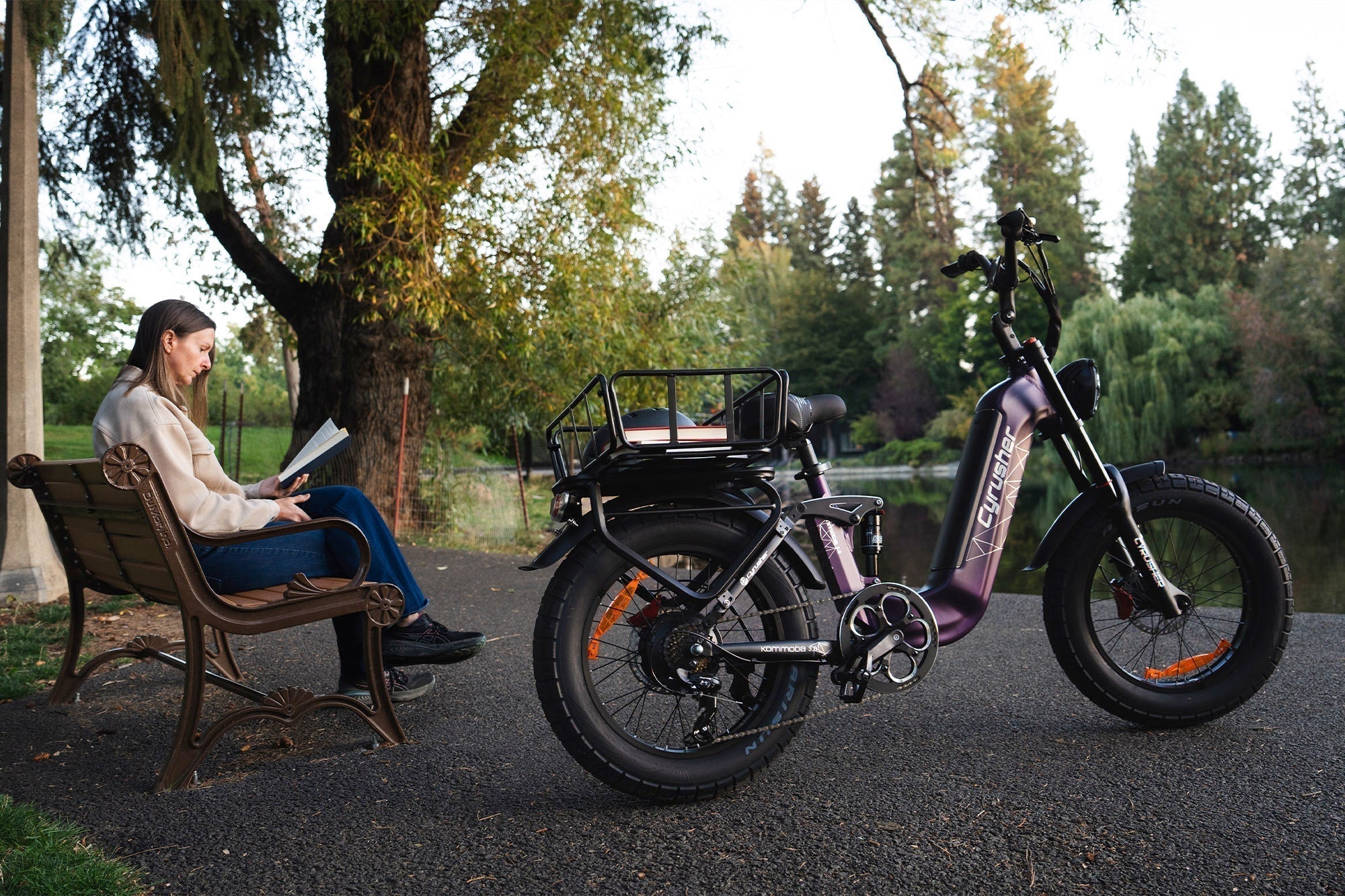


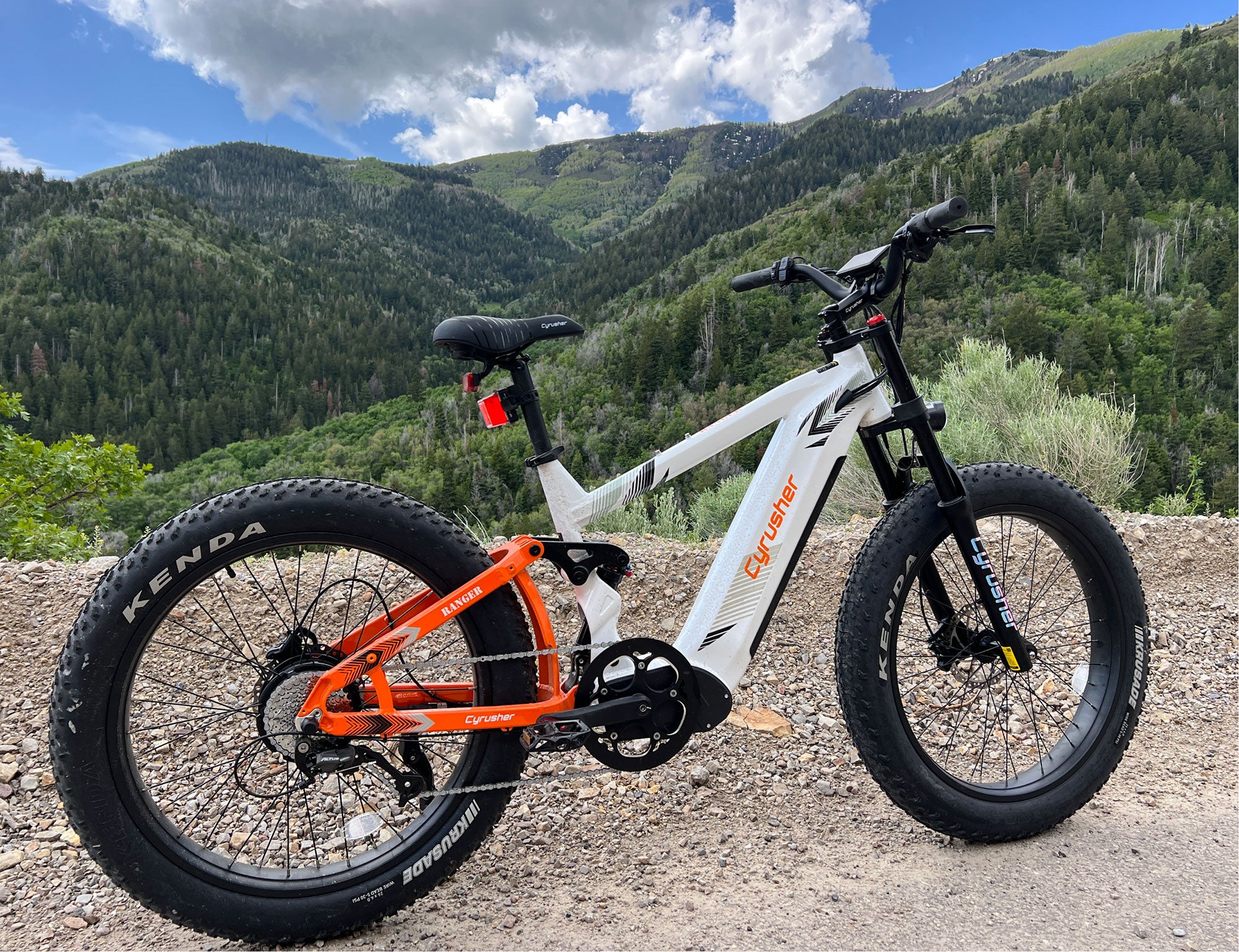

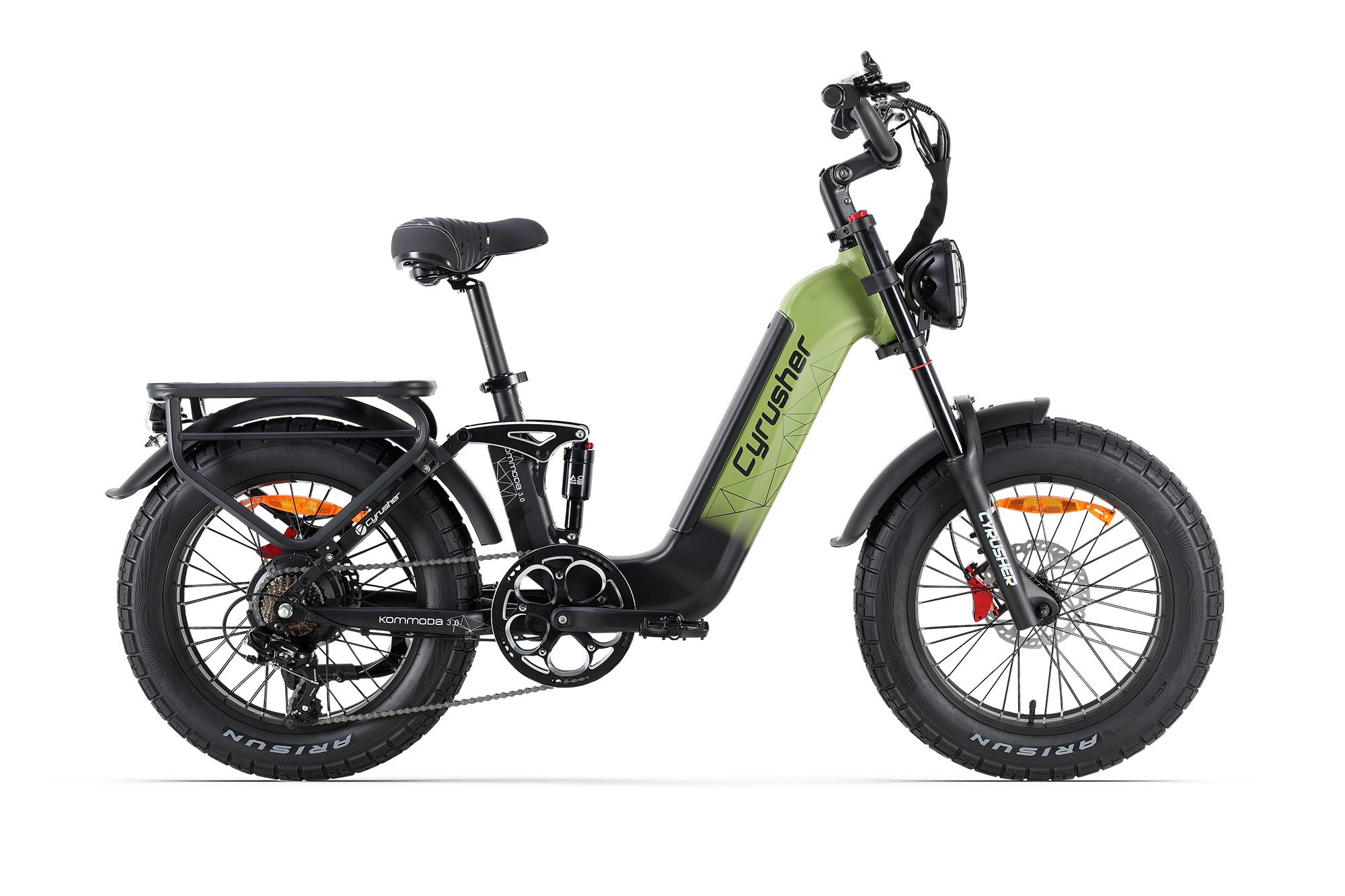
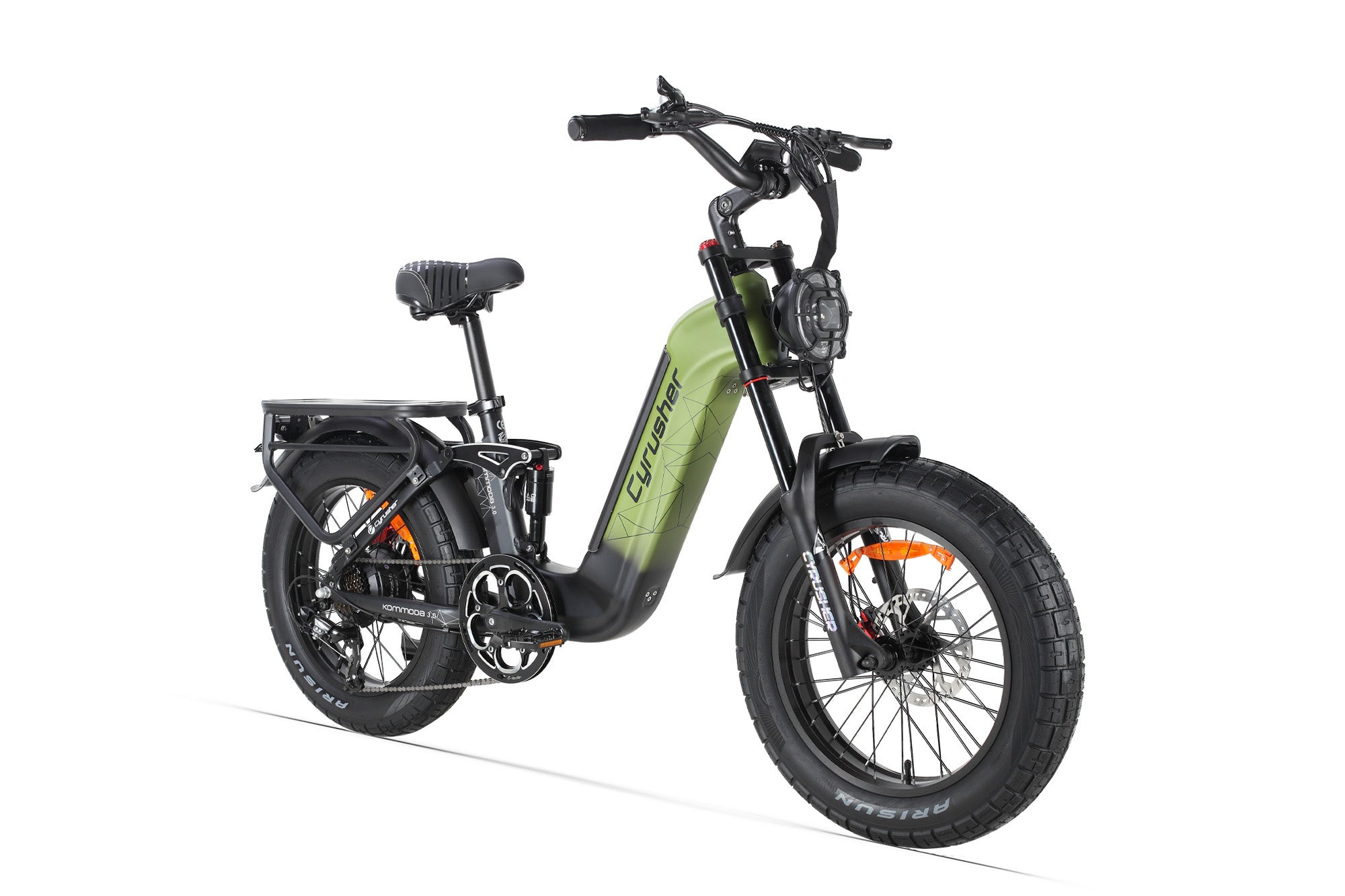


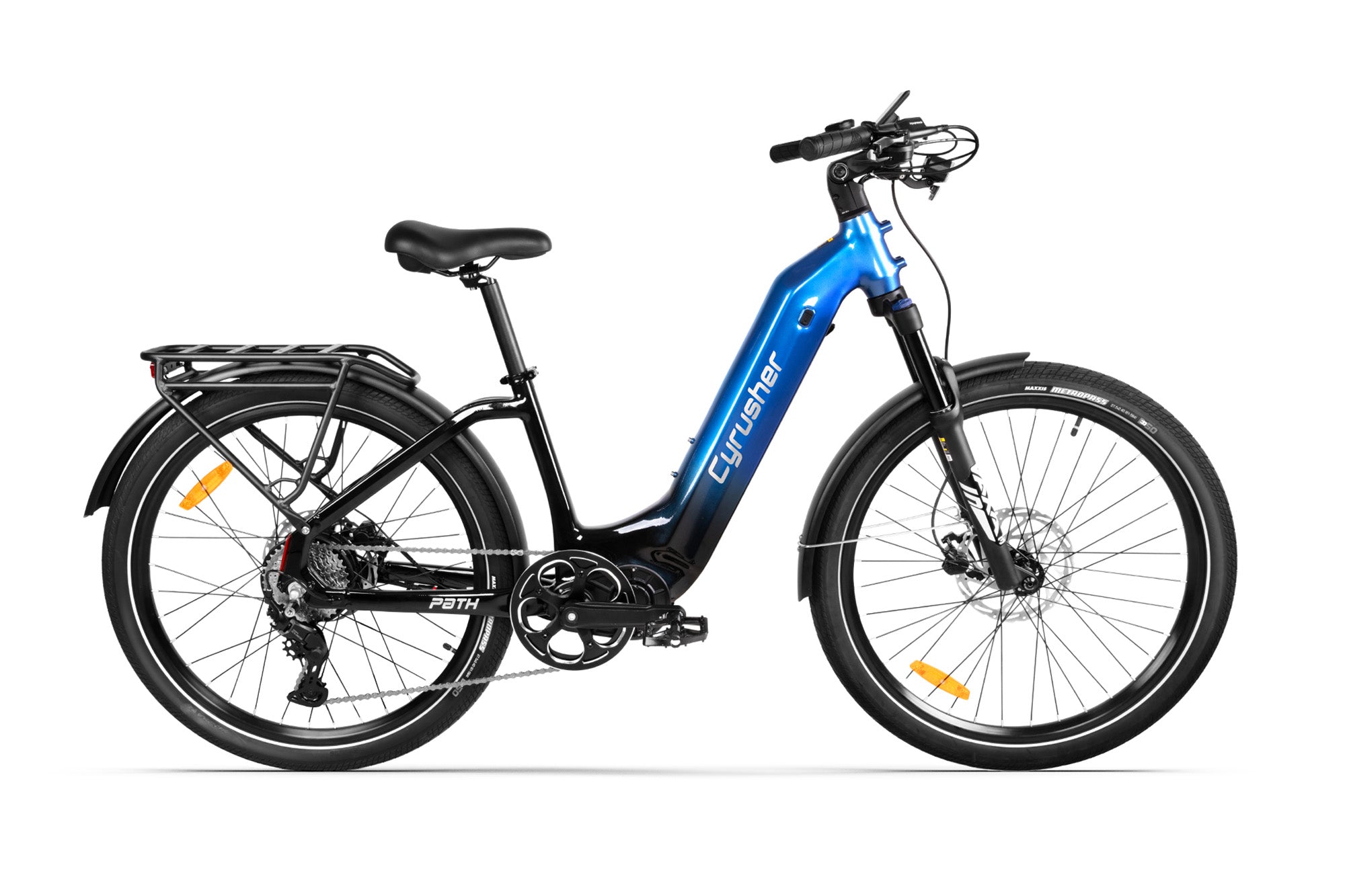
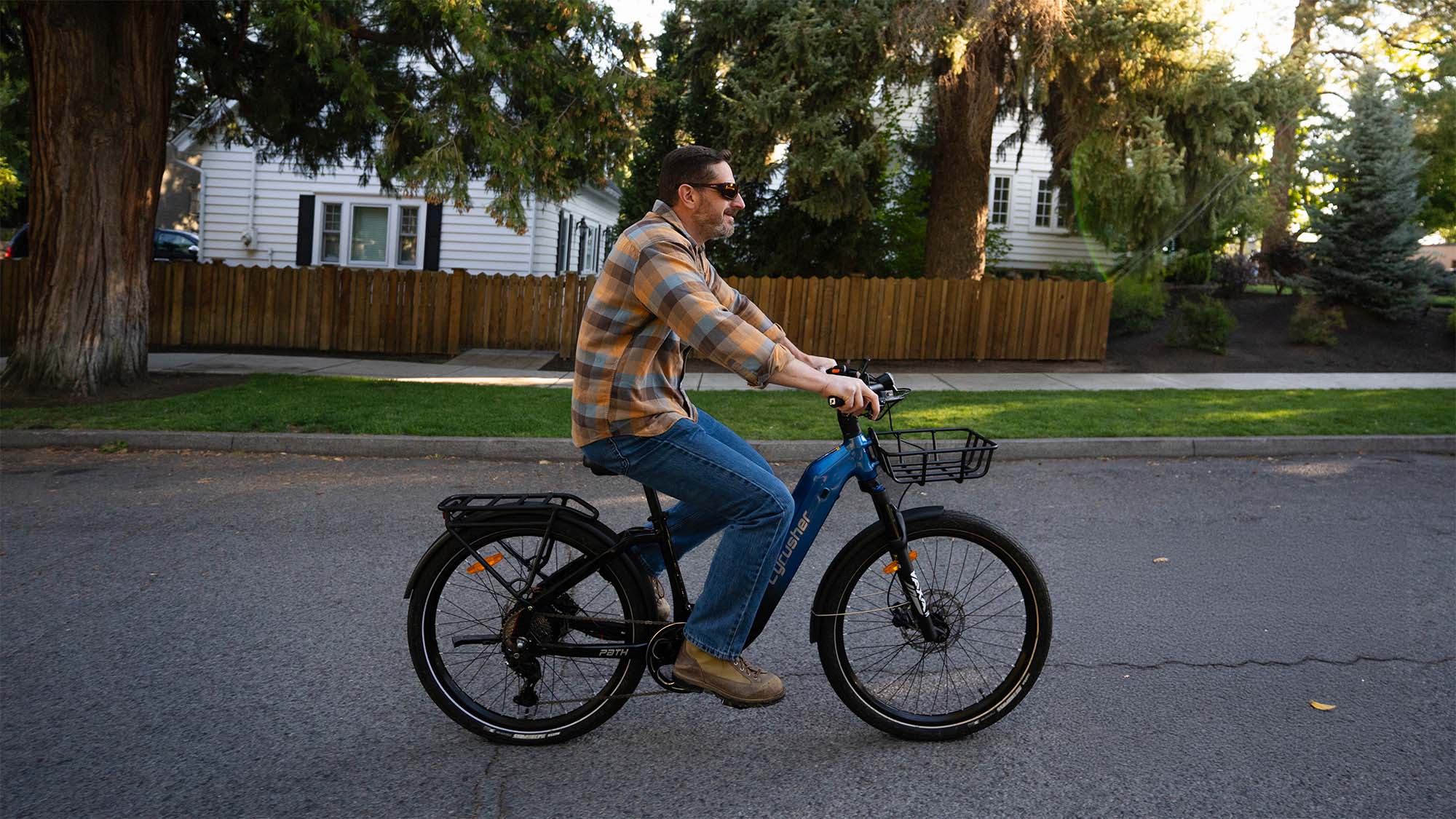
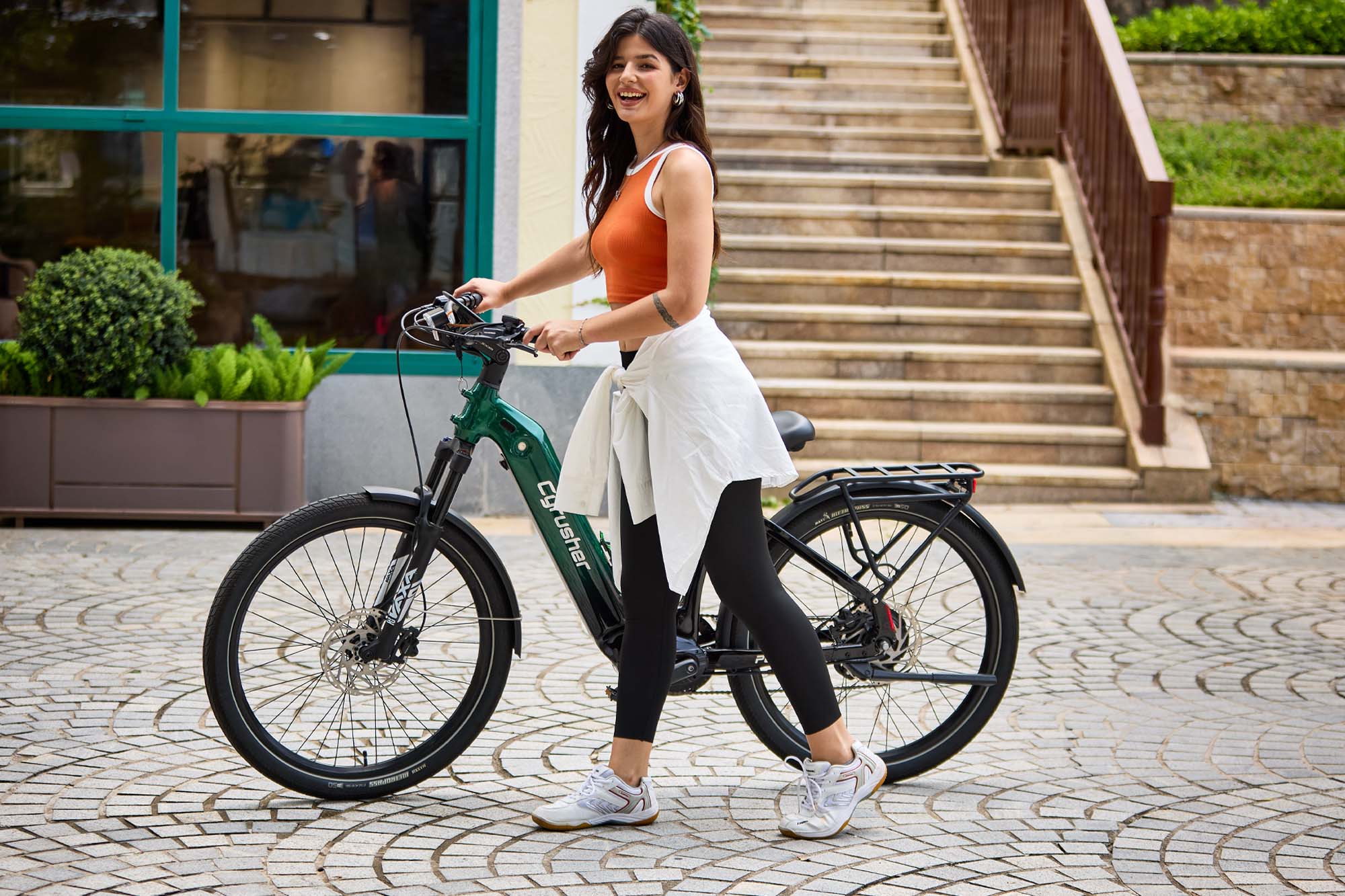
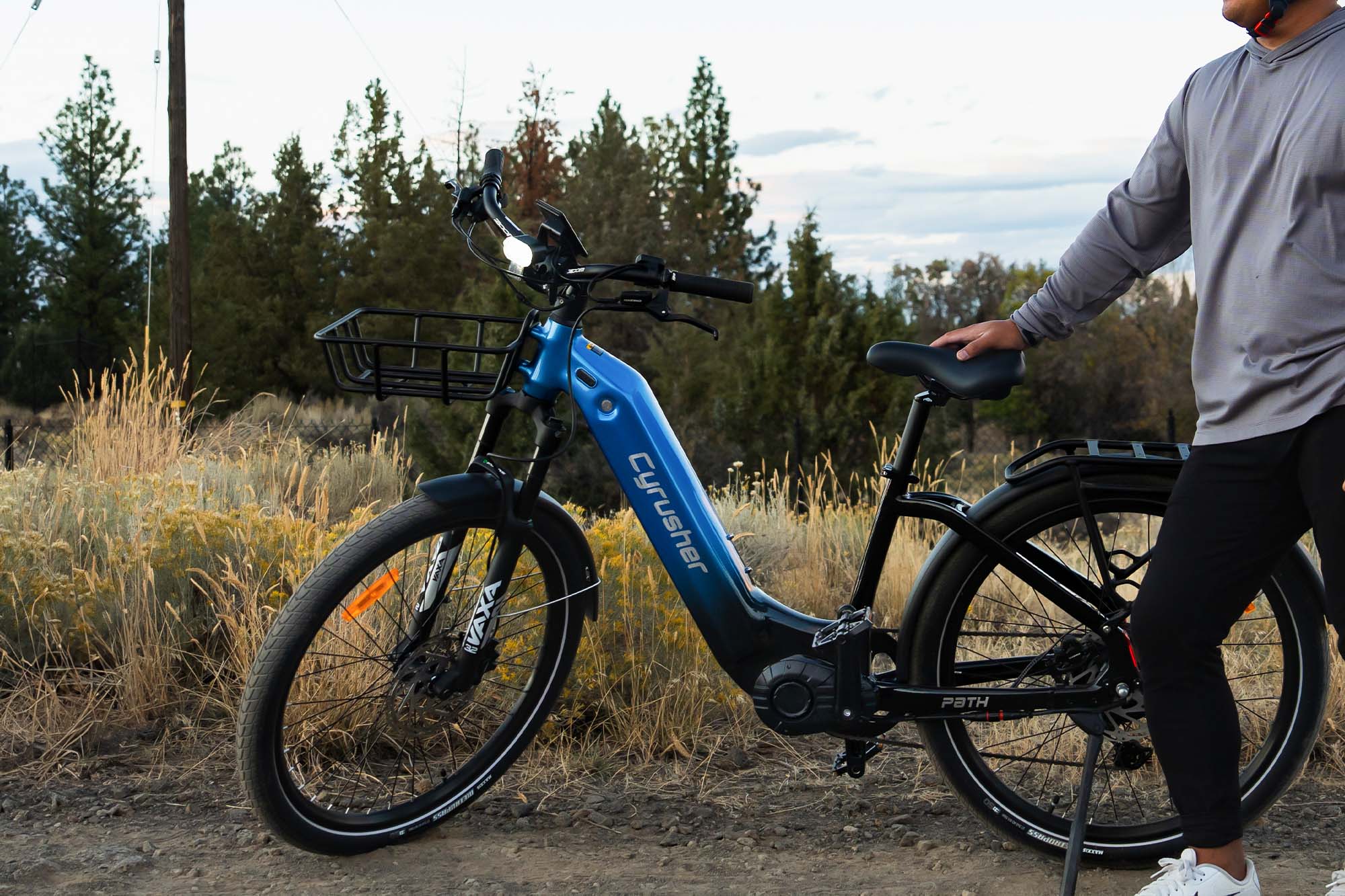
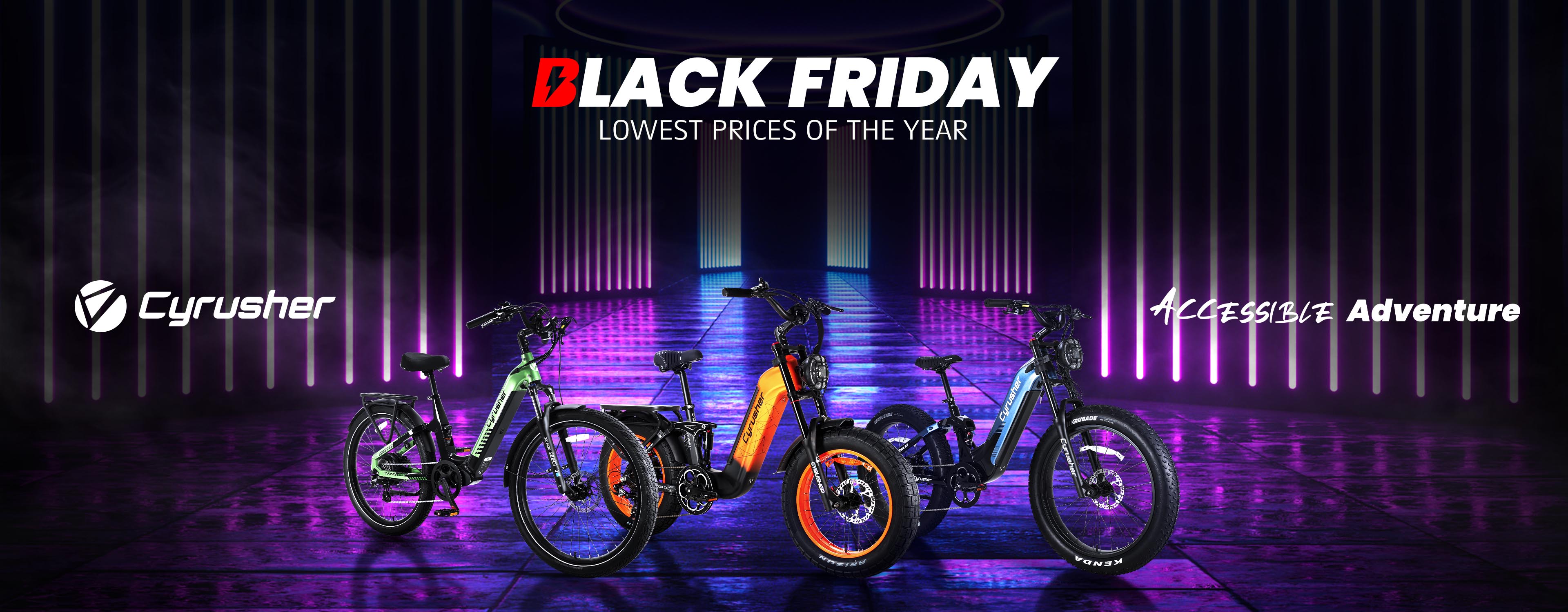

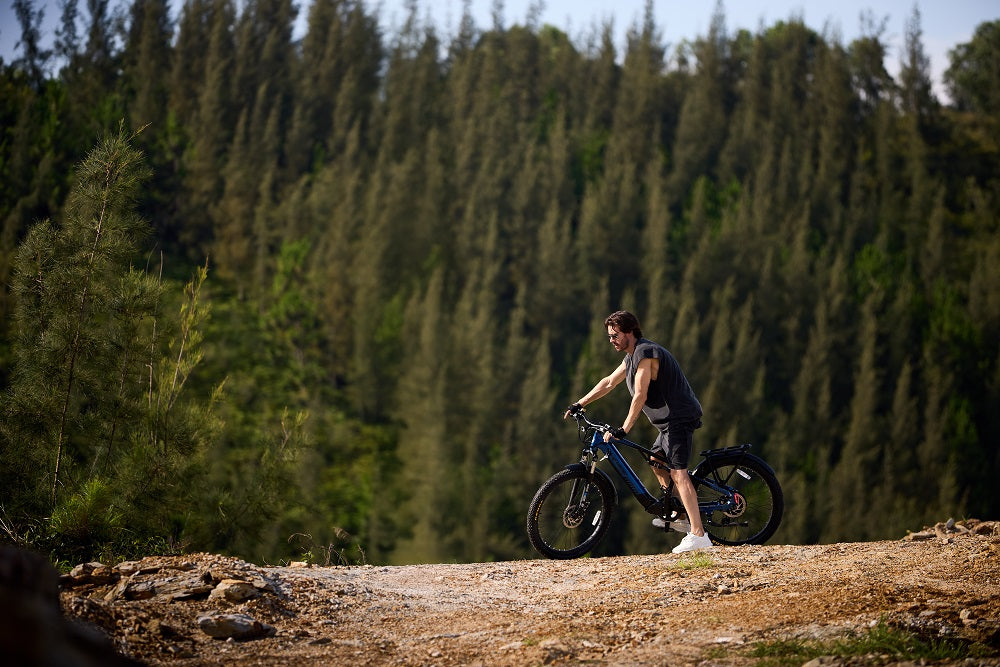
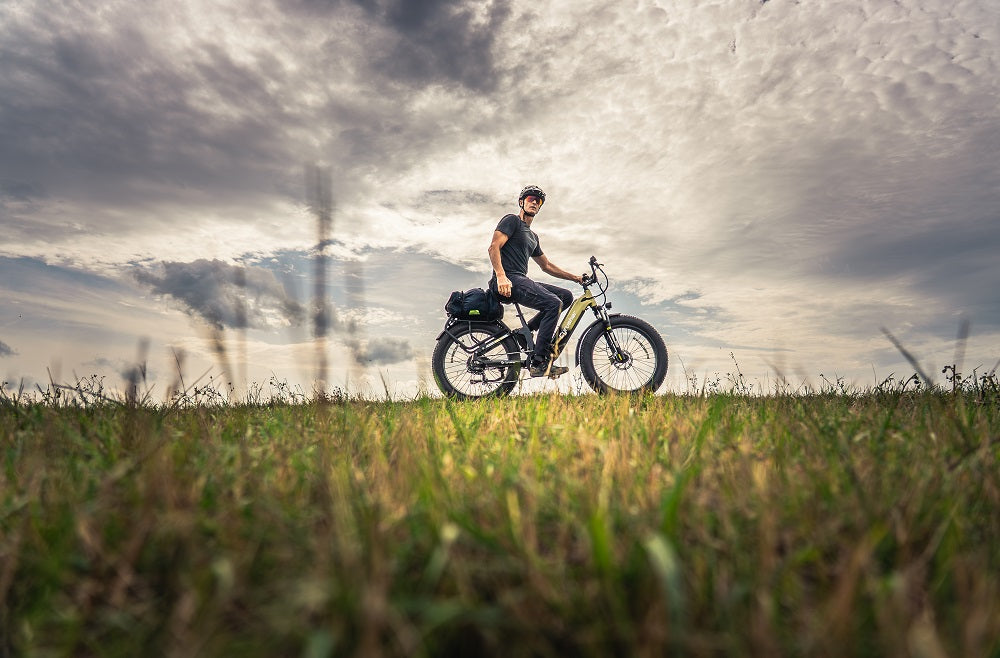
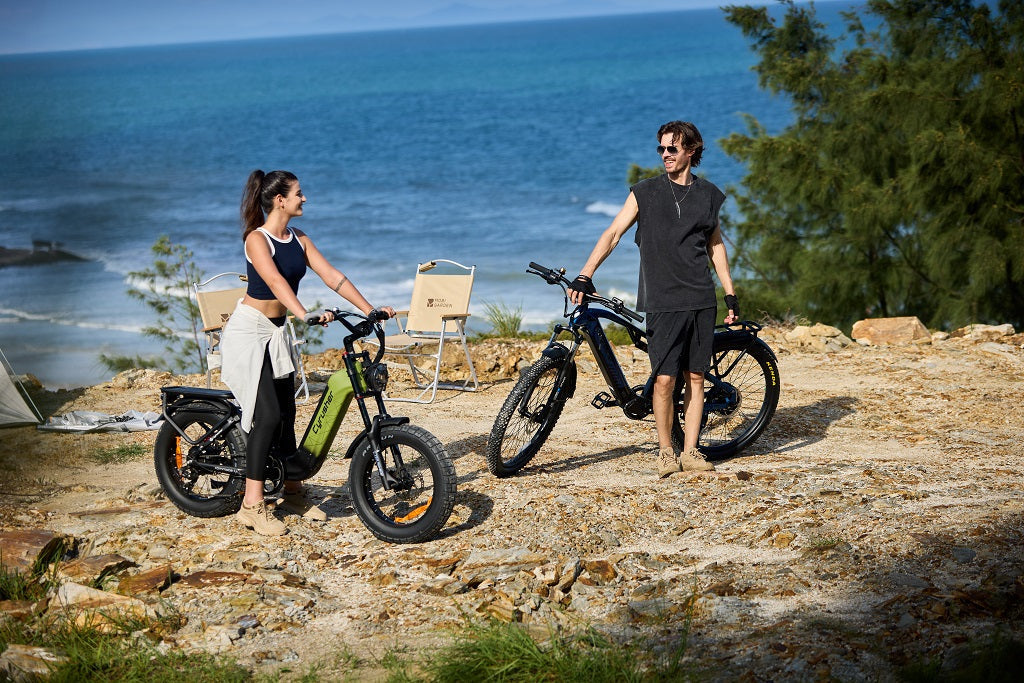
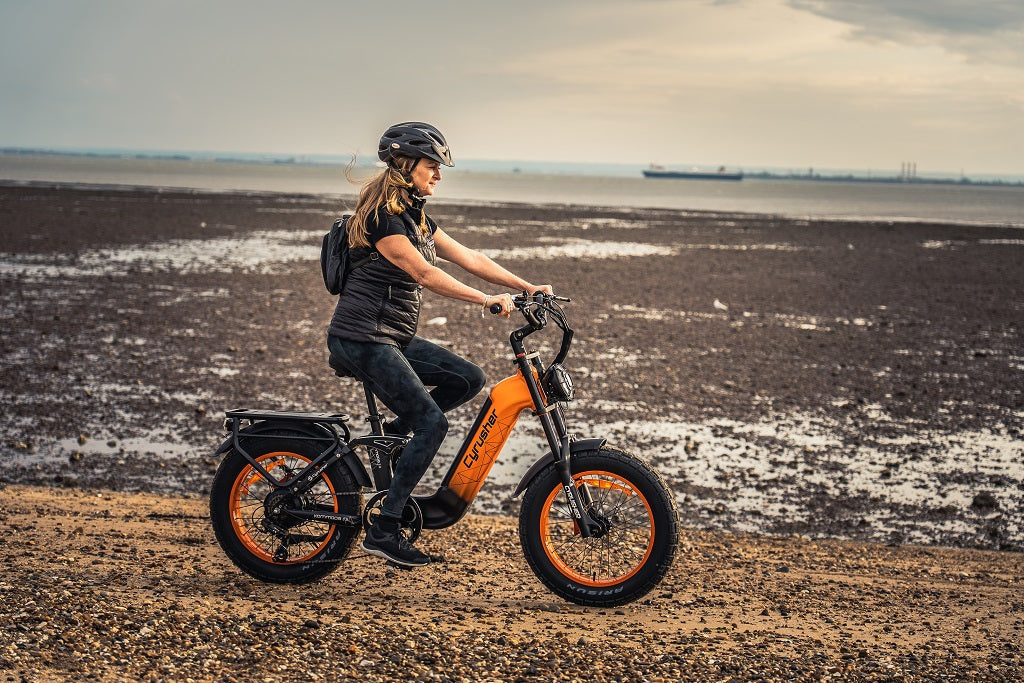
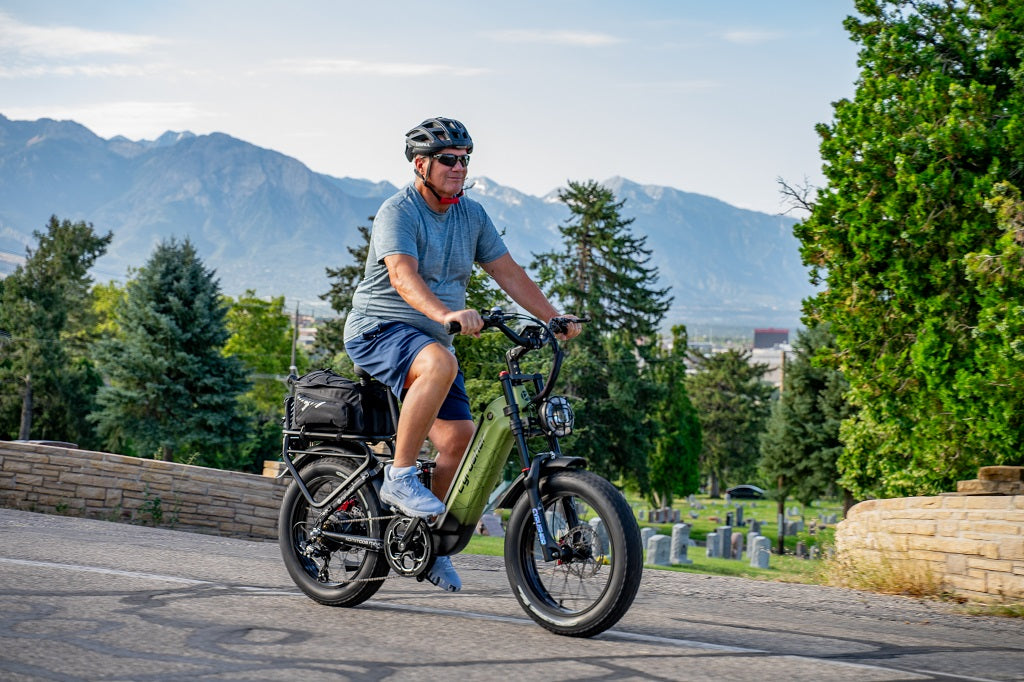
Share:
The Ultimate Cyrusher E-Bike 2025 Black Friday Sale